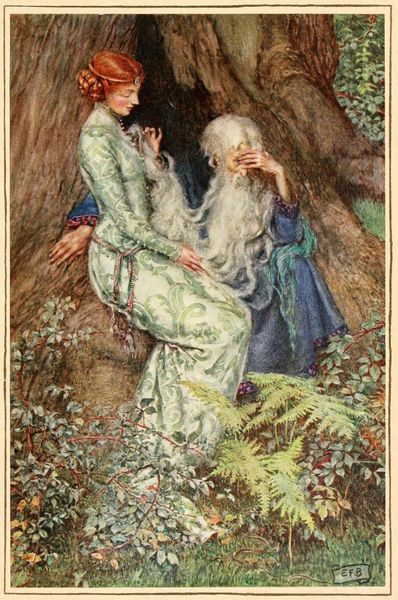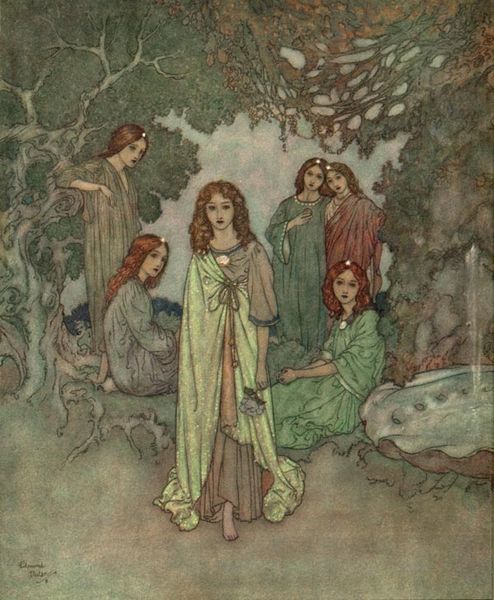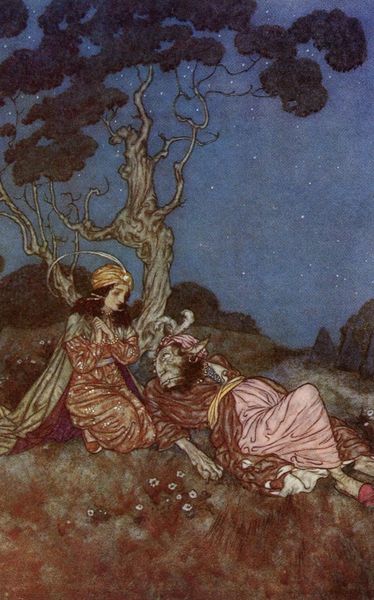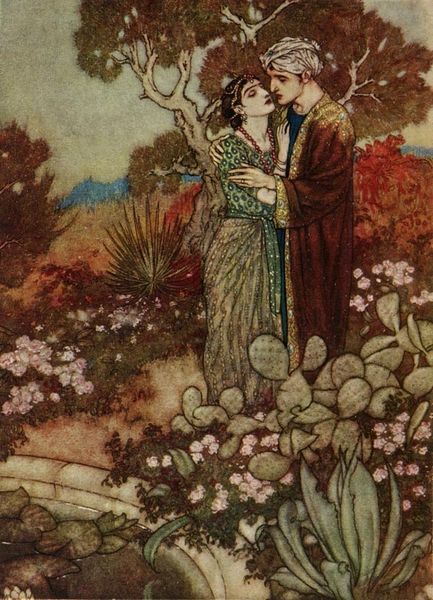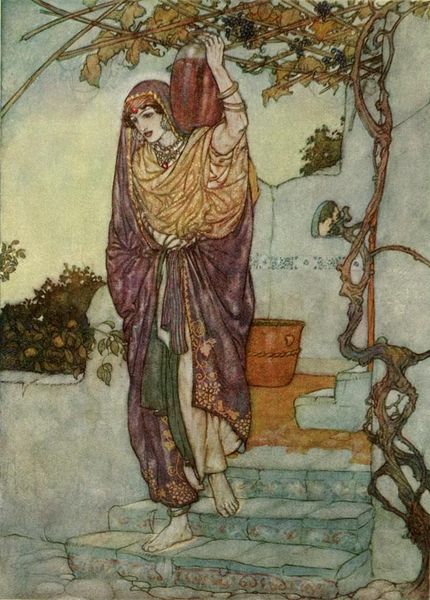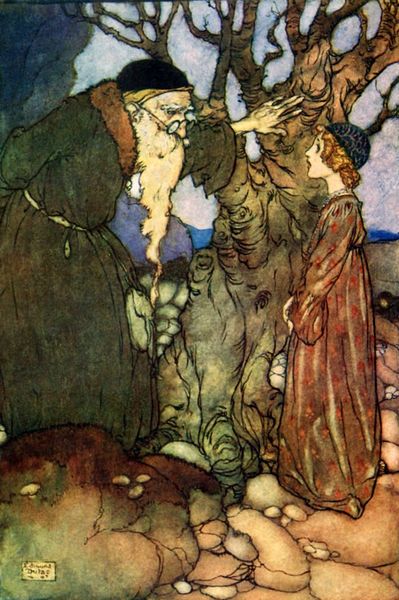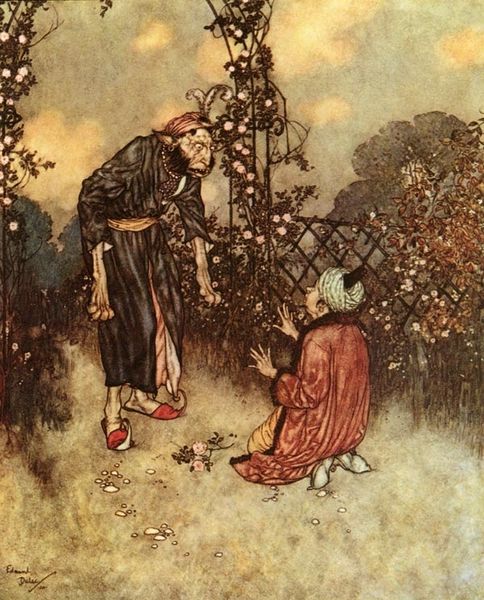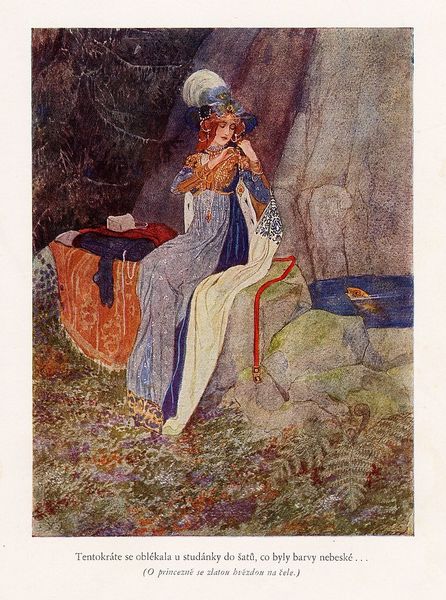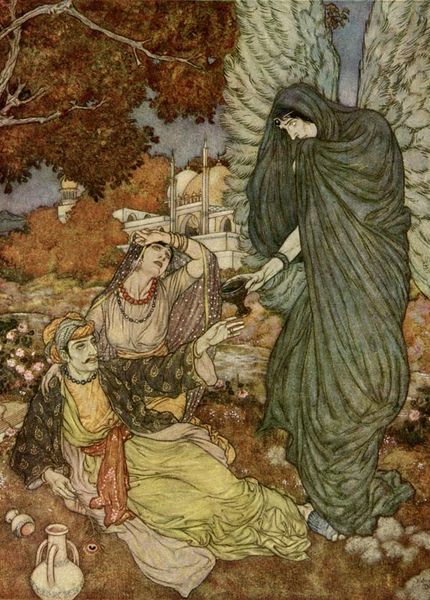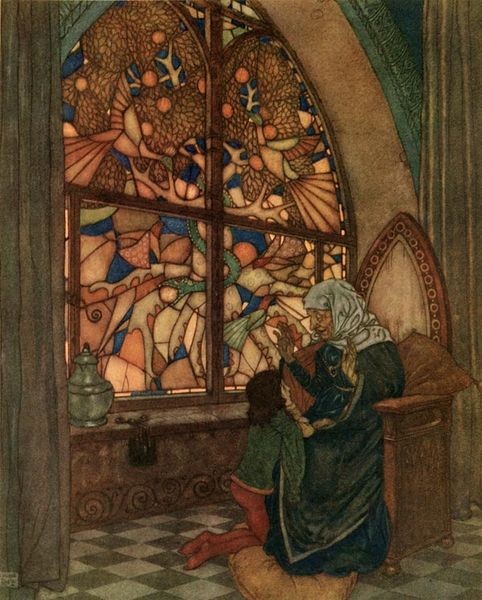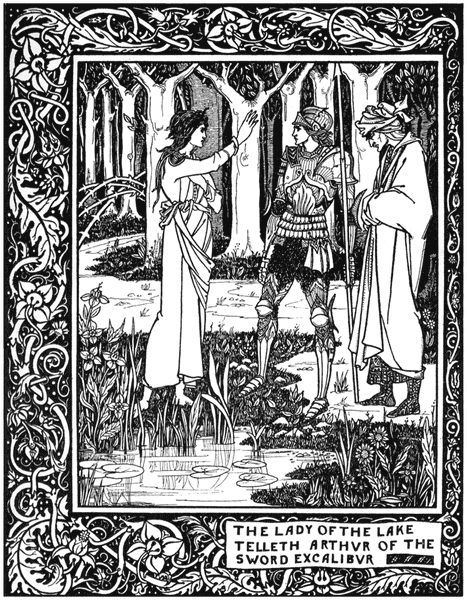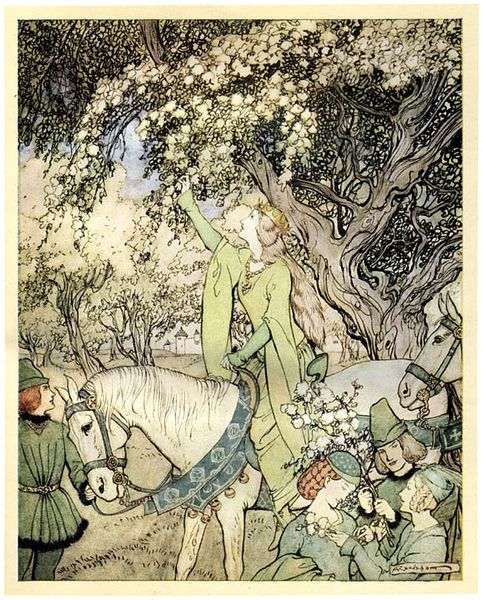
watercolor
#
landscape
#
figuration
#
watercolor
#
coloured pencil
#
orientalism
#
symbolism
#
watercolour illustration
#
watercolor
Copyright: Edmund Dulac,Fair Use
Curator: Welcome. We’re looking at an intriguing piece titled "Human or Divine, The Rubaiyat of Omar Khayyam," an illustration rendered with watercolors. It exudes a dreamlike quality, wouldn’t you say? Editor: The mood is striking, almost theatrical. It reminds me of illustrations for the Tales of the Arabian Nights. The costumes look lush but there is this feeling that everything is just ornamentation, isn't it? Curator: The orientalist elements are very prominent. The draping fabrics, the figures' postures, and the decorative patterning on the vessel held by the female figure – they all construct a very specific visual language, informed by symbolism, but removed from tangible practice. Editor: The craft here intrigues me most. Look at the paper's visible texture beneath the washes of color. Was the paper handmade? What pigments were used to create those subtle, shifting hues of blues, greens, and browns? One thinks about the commerce enabling such illustration: trade routes for pigment, paper mills—all things so essential to its final production. Curator: The focus remains the figures themselves, rendered within a clearly defined aesthetic. There’s a studied contrast between the opulence implied and a melancholy, romantic quality. What do you make of their relationship within the frame? Editor: I wonder about the accessibility of illustrated texts at the time of this piece's creation. Who commissioned these, and how was the book distributed? These objects and artworks became tokens of social aspiration, revealing consumption patterns just as the content itself sought elevated contemplation. Curator: The very materiality creates and reinforces that social distance by establishing hierarchies, both within the narrative, of the book, and within society, in terms of access to such artistry. Editor: I wonder, too, what labor conditions shaped its very production. Watercolor seems innocent enough, yet it traveled trade routes, becoming entangled within imperial structures and power. Curator: In a sense, doesn’t that complex interweaving become part of the piece itself? Editor: Exactly. By analyzing its origin and production, it reveals connections we otherwise might overlook. Thanks to Edmund Dulac’s artwork, one thinks of material exchange and social hierarchies which both shape our reading and appreciation. Curator: An insightful intersection, bringing together close aesthetic reading with wider historical consideration! Thank you for your perspective.
Comments
No comments
Be the first to comment and join the conversation on the ultimate creative platform.

